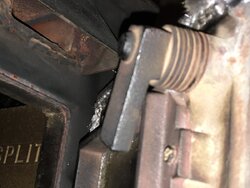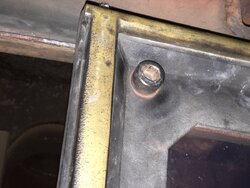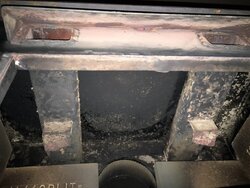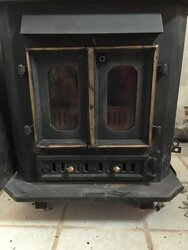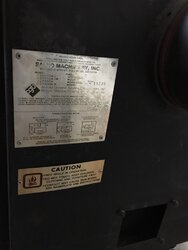Hey guys. I'm definitely new here and to wood burning.
I bought a stove a while back and just finished putting it in. Just have to do some minor cosmetic stuff.
On the inside it had no bricks and nothing on the ceiling. Not sure if that is what is called the "Baffle"? It doesnt have tubes except for rectangular tubes that have front vents.
As you can tell I'm a definite noob. This thing is very old and my local supplier had no idea what it was either and had to call corporate. Its a Salvo Machinery. No one still knows which model. Two doors on the front and a grate for the coals. So its a wood/coal stove.
It also has a spot for the blower attachment, but it doesnt have it.
So far I changed the gaskets, both doors, both windows and the ash door, installed fire bricks and overlapped some so I didnt have to cut anything. Installed the pipe shield and will be doing the thermal barrier on the wall with the spacers.
But, I'm not sure if anything is needed on the ceiling because it does get kinda hot and trying to play it safe here. Does it need the ceramic blanket and the blower? Also, what can I do about the handles? I added pics. basically its just a hex with nothing there.
I bought a stove a while back and just finished putting it in. Just have to do some minor cosmetic stuff.
On the inside it had no bricks and nothing on the ceiling. Not sure if that is what is called the "Baffle"? It doesnt have tubes except for rectangular tubes that have front vents.
As you can tell I'm a definite noob. This thing is very old and my local supplier had no idea what it was either and had to call corporate. Its a Salvo Machinery. No one still knows which model. Two doors on the front and a grate for the coals. So its a wood/coal stove.
It also has a spot for the blower attachment, but it doesnt have it.
So far I changed the gaskets, both doors, both windows and the ash door, installed fire bricks and overlapped some so I didnt have to cut anything. Installed the pipe shield and will be doing the thermal barrier on the wall with the spacers.
But, I'm not sure if anything is needed on the ceiling because it does get kinda hot and trying to play it safe here. Does it need the ceramic blanket and the blower? Also, what can I do about the handles? I added pics. basically its just a hex with nothing there.


